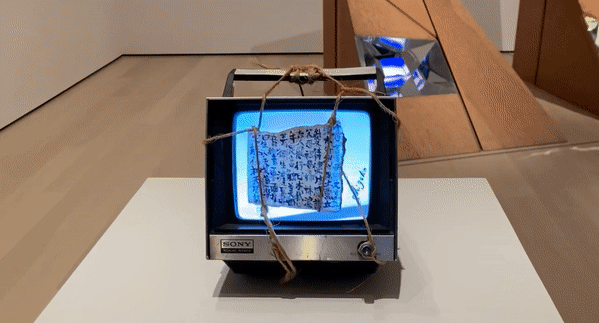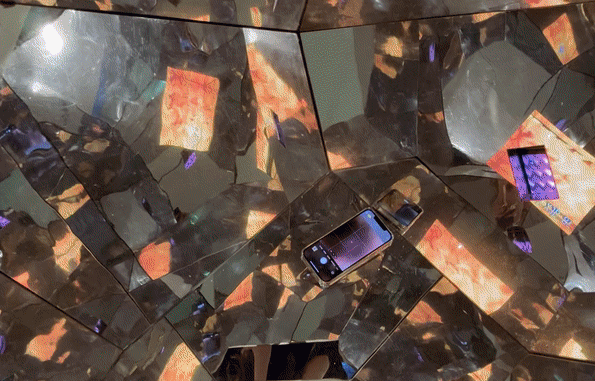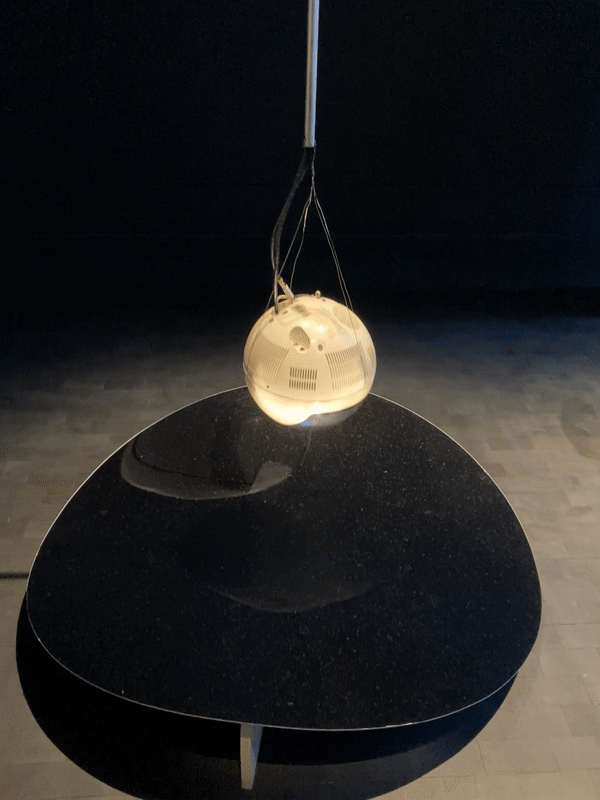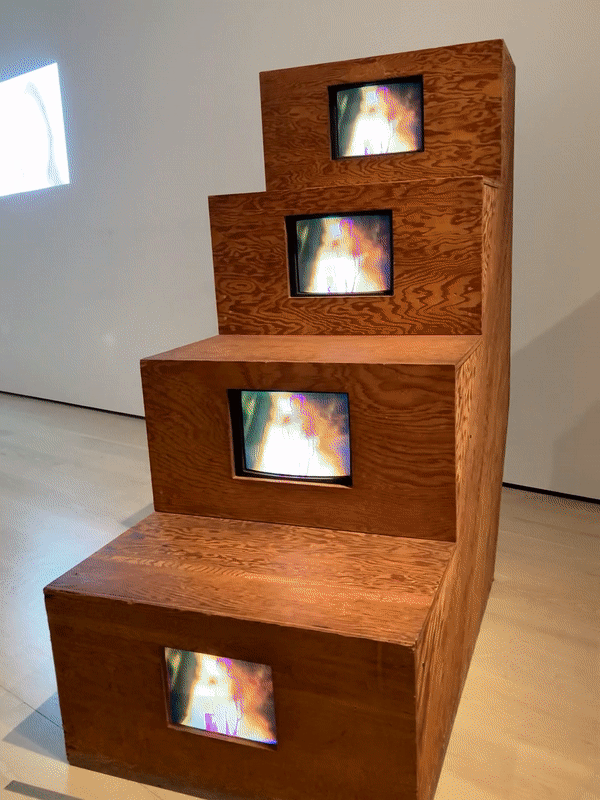
Shigeko Kubota’s Berlin Diary: Thanks to My Ancestors. 1981. Cathode-ray tube monitor, crystal, ink, and twine. 9 × 8 × 11″ (22.9 × 20.3 × 27.9 cm).
“Everything is video,” the Japanese-born, New York–based artist Shigeko Kubota remarked in a 1975 interview. “[We] eat video, shit video, so I make video poems… Part of my day, everyday, the memory—I like to put in video.”
Overlooked compared to some of her other Fluxus-associated peers (including her husband, the pioneering video artist Nam June Paik), Kubota’s work is now the subject of a small but brilliant exhibition at the Museum of Modern Art, Liquid Reality, which spans her artistically fertile period from 1976 to 1985. In Kubota’s hands, video abandons its cold, sleek pretense, instead taking on a wild quality, with inverted color schemes and pulsating time warps akin to an overgrown garden. “Film was chemical, but video was more organic,” she told The Brooklyn Rail in 2007, eight years before her death at the age of seventy-seven. In her work, mountains stand tall, water seeps, and, in 1979’s River, a literal stream babbles over three neon-colored monitors, like some magic rivulet snatched from an old mythology and transported to our technological age.
On a late afternoon in early October, a crowd filmed Kubota’s videos, and water from Niagara Falls I (1985) splashed. The people’s murmurs were like the whirring sound of a tape spinning backward. The room grew cool and dark. Suddenly, a small shriek, and a beleaguered MoMA employee ran over to one of the three open-top pyramids comprising 1976’s installation piece Three Mountains. A couple stood near the lip of one of them, peering in. There, inside the column, amid mirrors and monitors reflecting endlessly, lay another type of screen: while taking a video, one of the couple had by accident dropped their phone. —Rhian Sasseen

Inside of Three Mountains. 1976–79. Four-channel standard-definition video (color, sound; approx. 30 min. each), seven cathode-ray tube monitors, plywood, and mirrors, overall dimensions variable.
* * *
A while ago, I was surprised to hear myself describe the reading of John le Carré as a guilty pleasure. I suppose I was trying to elevate my bookshelf in some way—trying to suggest that I occasionally wolf down some genre stuff in between Gravity’s Rainbow and Finnegans Wake. In any case, it was ungracious nonsense. The further I get into middle age, the more I lean toward hospitable books and the more I distrust the assertion that this hospitality is evidence of some sort of authorial limitation or lack of literary ambition. As Ian McEwan stated, le Carré is not simply a spy writer, “he’s in the first rank.”
All of which to say, I have le Carré’s final book, Silverview, sitting on my nightstand, waiting for me when I get home. How wonderful and how reassuring to be welcomed into the dusty, bureaucratic world of le Carré’s espionage one last time. —Robin Jones
I recently asked an old friend to send some music they’d been listening to as a lazy way of staying connected. They sent back Leona Anderson’s 1957 album Music to Suffer By, which has exactly the anti-sonorous quality you’d expect from a silent film actress; the song “Summertime Blues” by the Flying Lizards; and Miharu Koshi’s 1983 album Tutu, which is lightly industrial at heart and rich synth on top, and has me head over heels. —Lauren Kane
from The Paris Review https://ift.tt/3pOEqSx


Comments
Post a Comment